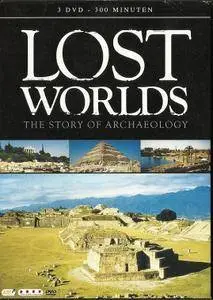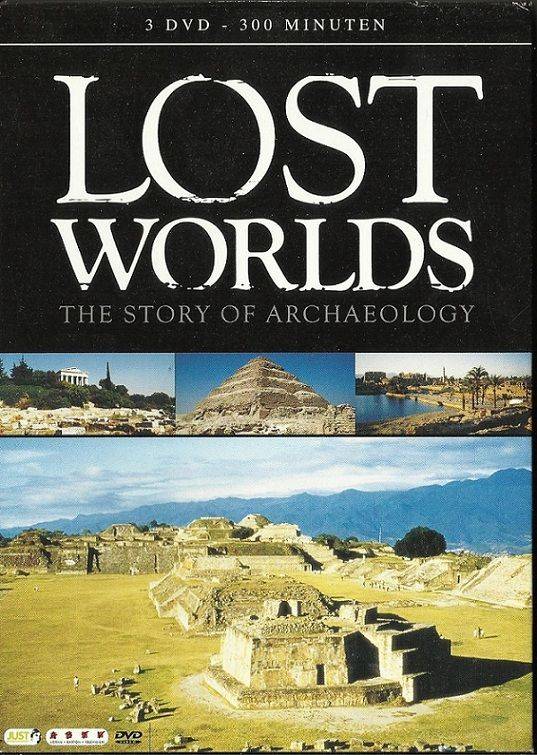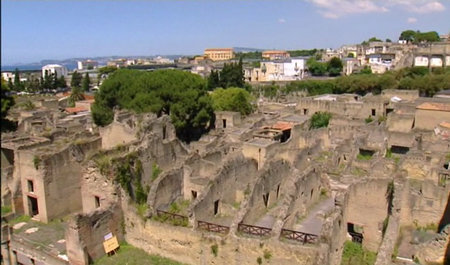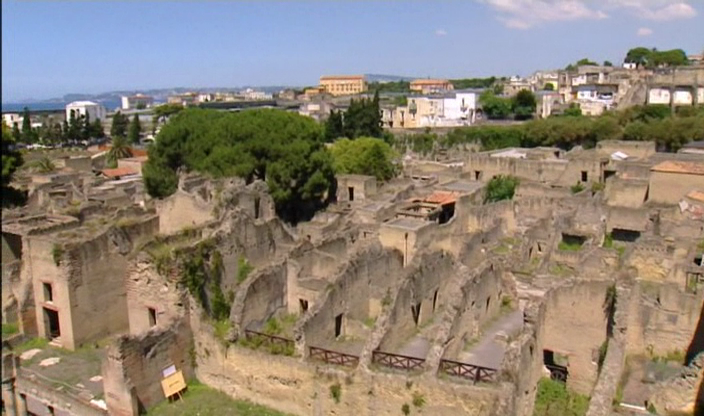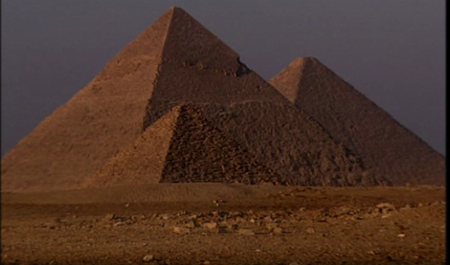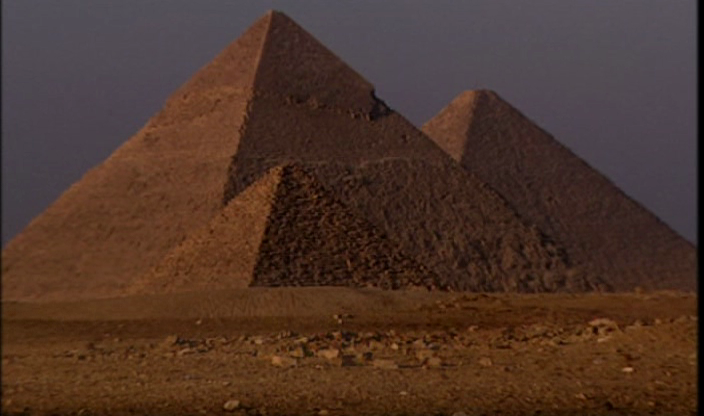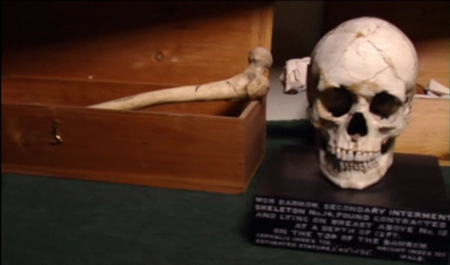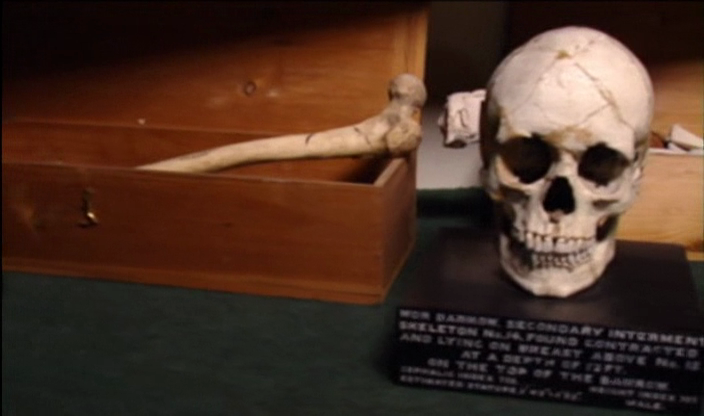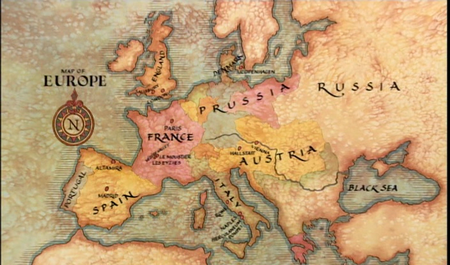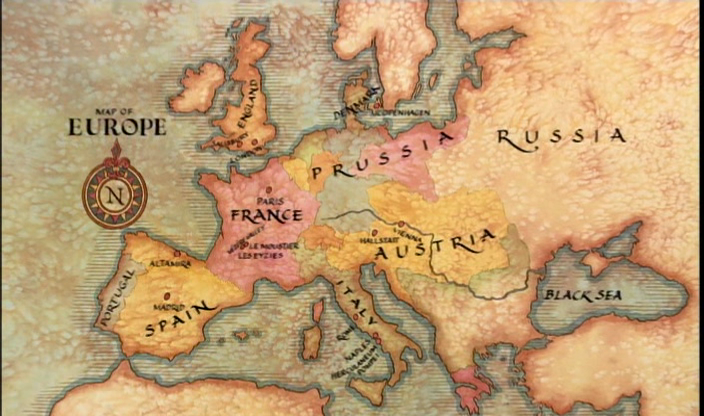Channel 4 - Lost Worlds: The Story of Archaeology (2000)
DVDRip | 704 x 400 | .AVI/XviD @ 2030 Kbps | 6x~50mn | 5.21 GB
Audio: English AC-3 448 Kbps, 6 channels | Subs: None
Genre: Documentary, History
DVDRip | 704 x 400 | .AVI/XviD @ 2030 Kbps | 6x~50mn | 5.21 GB
Audio: English AC-3 448 Kbps, 6 channels | Subs: None
Genre: Documentary, History
This six-part series presents the definitive history of archaeology, a 250-year worldwide odyssey that began with the unearthing of the ruins of Pompeii buried beneath the ash of Mt. Vesuvius. In a short time, archaeologists started pursuing very different objectives: some were treasure-seekers hoping to plunder antiquities of the ancient world; others sought to prove theories about the origins of civilization or the historical accuracy of Homer or the Bible; still others focused on humans themselves, trying to determine the age of the species. The series also looks at how archaeology has been misused as an instrument of foreign policy and where the study is going in the future with new technologies and methods.Part 1: Stones and Bones
In the last 250 years, archaeologists have changed the basic understanding of time and human existence. This program looks at the birth of modern archaeology, an event that stirred all of Europe’s imagination: the unearthing of the ruins of Pompeii and Herculaneum in the 18th century, buried since Roman times under volcanic ash. It follows the early excavations of Pitt Rivers in Egypt and England; the classification of the Stone, Bronze, and Iron Ages; the momentous discovery of cave paintings in Spain and France; and Mary Leakey’s finds in Africa which took human history back over 3 million years.
Part 2: Treasure Seekers
Archaeology was born of treasure-seeking, but it became the stimulus for rampant pillaging of antiquities in the 18th and 19th centuries. This program charts the escalation of archaeological acquisition from gentlemanly passion to national plunder, from Lord Elgin and the marble friezes of the Parthenon to Richard Lepsius and his Egyptian collection that took sixty barges to transport to Berlin. Also examined is how greed gave way to altruism and preservation, most notably under August Mariette, the acquisitions expert for the Louvre who curtailed the sacking of Egypt and created the Cairo Museum.
Part 3: Digging by the Book
While most read Homer’s Iliad as an entertaining epic, one man believed it was more than a story and could actually be used as a literary map to find ancient Troy; his name was Heinrich Schliemann and he found treasure and a buried city in what is now Turkey. But was it Troy? This video looks at "program archaeology," how archaeologists dig in the ground to find evidence for the stories in books. In a similar context, the episode covers the work of Flinders Petrie, who unearthed proof that the Israelites had really once lived in Egypt. Inspired by Schliemann’s example and Petrie’s findings, a whole wave of excavations ensued with the hopes of verifying the existence of various figures from the Bible.
Part 4: Looking for One Beginning
When explorers examined the remains of an advanced Mexican culture, they concluded that a superior race must have come from elsewhere to build the palaces and pyramids: the theory of diffusionism was born. This program charts the 150-year search for civilization’s origins, which most 19th and early 20th century archaeologists believed to be a single source. Though questioned in the 1950s by Henri Frankfort, the diffusion theory persisted, as this program shows, and received interpretations ranging from Thor Heyerdahl’s idea that the Mexican pyramids were built by the Egyptians to notions that they were made by aliens—all under the premise that the ancient Mexicans could not have done it themselves.
Part 5: At the Service of the State
In 1940, Hitler’s archaeologists excavated sites in Poland to try to prove that Germans had lived there before the Poles—an anthropological justification for political aggression and military invasion. This program explores the use of archaeology as a tool for propaganda and diplomatic machination by focusing on the long-standing connections between Germany and Greece. The program also looks at how Mussolini, like Hitler, used Greek motifs and Roman regalia to package the image of his party and, by so doing, align the destiny of fascist Italy with ancient traditions.
Part 6: The Future of the Past
What are the concerns of archaeology today? How will improved methods and scientific technology shift perspective on the past? The last episode of this series looks at the shift from excavating grand palaces to discovering and learning more about some of the earliest communities, such as at San Jose Magote in the Oaxaca Valley in Mexico, where evidence has been found of human habitation dating back 3,000 years. The program also interviews Professor George Bass of the Institute of Nautical Archaeology in Texas, the father of underwater archaeology, who has discovered and cataloged numerous shipwrecks off the coast of modern Turkey, some dating from the Bronze Age.
also You can look my other last: History-posts
General
Complete name : Ch4.Lost.Worlds.The.Story.of.Archaeology.1of6.Stones.and.Bones.avi
Format : AVI
Format/Info : Audio Video Interleave
File size : 891 MiB
Duration : 50 min 3 s
Overall bit rate : 2 488 kb/s
Movie name : Ch4.Lost.Worlds.The.Story.of.Archaeology.1of6.Stones.and.Bones.
Writing application : VirtualDubMod 1.5.10.2 (build 2542/release)
Writing library : VirtualDubMod build 2542/release
Video
ID : 0
Format : MPEG-4 Visual
Format profile : Advanced Simple@L5
Format settings, BVOP : 1
Format settings, QPel : Yes
Format settings, GMC : No warppoints
Format settings, Matrix : Custom
Codec ID : XVID
Codec ID/Hint : XviD
Duration : 50 min 3 s
Bit rate : 2 030 kb/s
Width : 704 pixels
Height : 400 pixels
Display aspect ratio : 16:9
Frame rate : 25.000 FPS
Color space : YUV
Chroma subsampling : 4:2:0
Bit depth : 8 bits
Scan type : Progressive
Compression mode : Lossy
Bits/(Pixel*Frame) : 0.288
Stream size : 727 MiB (82%)
Writing library : XviD 1.2.1 (UTC 2008-12-04)
Audio
ID : 1
Format : AC-3
Format/Info : Audio Coding 3
Format settings, Endianness : Big
Codec ID : 2000
Duration : 50 min 3 s
Bit rate mode : Constant
Bit rate : 448 kb/s
Channel(s) : 6 channels
Channel positions : Front: L C R, Side: L R, LFE
Sampling rate : 48.0 kHz
Frame rate : 31.250 FPS (1536 spf)
Bit depth : 16 bits
Compression mode : Lossy
Stream size : 160 MiB (18%)
Alignment : Split accross interleaves
Interleave, duration : 40 ms (1.00 video frame)
Interleave, preload duration : 500 ms
Service kind : Complete Main
Complete name : Ch4.Lost.Worlds.The.Story.of.Archaeology.1of6.Stones.and.Bones.avi
Format : AVI
Format/Info : Audio Video Interleave
File size : 891 MiB
Duration : 50 min 3 s
Overall bit rate : 2 488 kb/s
Movie name : Ch4.Lost.Worlds.The.Story.of.Archaeology.1of6.Stones.and.Bones.
Writing application : VirtualDubMod 1.5.10.2 (build 2542/release)
Writing library : VirtualDubMod build 2542/release
Video
ID : 0
Format : MPEG-4 Visual
Format profile : Advanced Simple@L5
Format settings, BVOP : 1
Format settings, QPel : Yes
Format settings, GMC : No warppoints
Format settings, Matrix : Custom
Codec ID : XVID
Codec ID/Hint : XviD
Duration : 50 min 3 s
Bit rate : 2 030 kb/s
Width : 704 pixels
Height : 400 pixels
Display aspect ratio : 16:9
Frame rate : 25.000 FPS
Color space : YUV
Chroma subsampling : 4:2:0
Bit depth : 8 bits
Scan type : Progressive
Compression mode : Lossy
Bits/(Pixel*Frame) : 0.288
Stream size : 727 MiB (82%)
Writing library : XviD 1.2.1 (UTC 2008-12-04)
Audio
ID : 1
Format : AC-3
Format/Info : Audio Coding 3
Format settings, Endianness : Big
Codec ID : 2000
Duration : 50 min 3 s
Bit rate mode : Constant
Bit rate : 448 kb/s
Channel(s) : 6 channels
Channel positions : Front: L C R, Side: L R, LFE
Sampling rate : 48.0 kHz
Frame rate : 31.250 FPS (1536 spf)
Bit depth : 16 bits
Compression mode : Lossy
Stream size : 160 MiB (18%)
Alignment : Split accross interleaves
Interleave, duration : 40 ms (1.00 video frame)
Interleave, preload duration : 500 ms
Service kind : Complete Main
Screenshots
Welcome to my blog - daily update!


